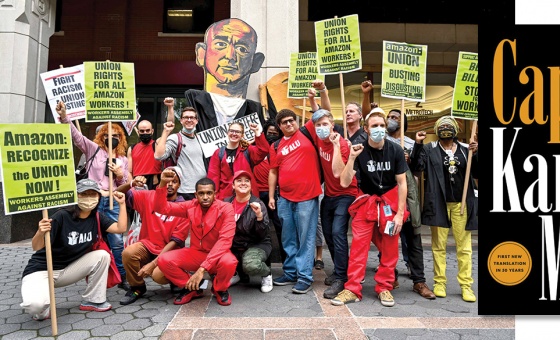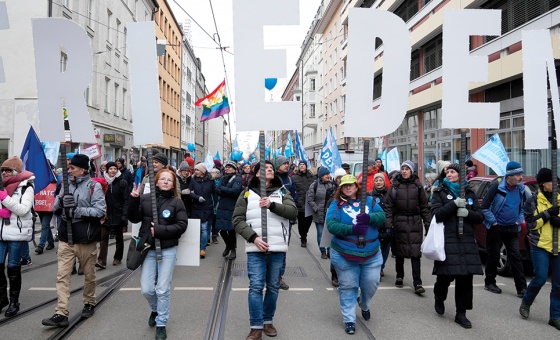This is the last article you can read this month
You can read more article this month
You can read more articles this month
Sorry your limit is up for this month
Reset on:
Please help support the Morning Star by subscribing here
IT WAS from their office near the British Museum at 98 Great Russell Street that 100 years ago the newly born branch of the Italian Fascist Party issued an invitation to a ball in the heart of London, the first such event in Britain.
The “Black Shirt Gala Ball” was to be held at the luxurious Cecil Hotel in the Strand on February 25 1923 “in aid of the fund for the fascista home in London.”
The eyecatching announcement in the Italian fascist weekly L’Eco d’Italia listed: DANCING from 8.30 P.M. (Evening Dress, Black Shirts for members of the Fascista Party), SUPPER at 10.30 P.M. and more DANCING TILL 3 A.M.
The wording made clear that the event was an official one organised “under the patronage of the Italian ambassador to the Court of St James, Marquis Della Torretta of the Princes of Lampedusa” with the Italian military and naval attaches in attendance.
The announcement included the fascio symbol, the bundle of sticks featuring an axe, indicating power over life and death.
Significantly, among those first listed as special participants in the gala were British guests: Lady A Ware and Lady H Franklin, followed by W Seaton, Esq and Captain Lyon Thompson.
The ball was celebrating the March on Rome that had taken place a few months earlier at the end of October. Mussolini was now in power; the fascist armed militia was at work consolidating its reign of terror.
In London, emboldened members of the branch of the Italian Fascist Party that had been set up in December were already at work with plans to organise the Italian community in Britain numbering about 20,000 into what was described as a “state in miniature.”
This meant the annexation of all the existing Italian organisations in Britain: the schools, the social and cultural centres and the trade unions.
Even the Italian hospital was to be put under the control of the Fascist Party. In editorials published by L’Eco d’Italia the warning to the Italians in Britain was spelt out in capital letters: OBEY.
Of course, Mussolini had every reason to be pleased about the budding fascist presence in Britain. During his visit to London in early December for talks at Downing Street he had taken care to be photographed in his suite at Claridge’s while receiving a delegation led by the fascists who had staged a tumultuous welcoming ceremony for his arrival at Victoria station.
Everything was going well for the fascists — except for a pioneering movement of opposition born in London that was using language equivalent to a call to arms.
This movement was formed by a group of Italian anti-fascists centred around Soho who had launched their own publication, a weekly called Il Comento.
In vitriolic articles Mussolini was described as a bandit and a delinquent who had to be got rid of. These first anti-fascists — anarchists, communists, socialists and republicans in exile — had found a formidable ally: the very famous suffragette Sylvia Pankhurst who was the editor of the Workers’ Dreadnought.
These anti-fascists were desperate to make themselves heard and reach out to British readers and she was giving them a platform.
Pankhurst had spent a brief time in Italy at the turn of the century when she had travelled to Venice to study art. She had encountered great political turbulence, with women at the forefront of demonstrations, including those involved in bread riots.
On returning to London, as well as embarking on the militant campaign for the vote for women, she had vehemently embraced the struggle of working-class resistance against exploitation.
It is not known how she first encountered the Italians living in exile in London engaged in a similar struggle, but militant activists such as Errico Malatesta were impossible to ignore.
He had acquired almost as much notoriety as Garibaldi had enjoyed in the previous century. Pankhurst may have noticed the radical views expressed by a friend of Malatesta, the Italian journalist Silvio Corio, who was championing anarcho-syndicalism and was denouncing Italy’s colonial atrocities in newspapers such as the Daily Herald.
What is certain is that Pankhurst and Corio were in contact in 1917 when one of his articles appeared in a December issue of the Workers’ Dreadnought, alongside those written by George Bernard Shaw and the Daily Herald’s editor, George Lansbury.
Corio had grown up in Turin, one of northern Italy’s major industrial towns where a couple of years later labour unrest erupted and metal workers in particular staged protests setting up workers’ councils in what seemed the prelude to a revolution.
In October 1919 Pankhurst and Corio travelled to Turin to take stock of the situation. She met the communist intellectual Antonio Gramsci, part of the group behind the publication of L’Ordine Nuovo.
Though they did not see eye to eye on the best way to bring about a revolution, clearly the visit made a strong impact on her.
She proceeded to Bologna where she attended the congress of the socialist party. Violent clashes erupted in the main square involving Mussolini’s supporters.
She was quick to detect an indication of worse to come. Leaving Corio, who was being chased by the police, behind she left the country apparently crossing the Alps on foot.
Back in London, they were first to ring the alarm about the fascists, calling them a bunch of terrorists who presented a menace not only to Italy but to the rest of Europe.
In the next couple of years they kept track of the “Mussolini conspiracy” while decrying the socialist ineffectiveness in articles in the Workers’ Dreadnought full of bitter disappointment: “The Italian metal workers have been sold.”
One of the first public meetings attended by Pankhurst in London specifically organised to denounce “the Fascisti dictatorship” took place on January 13 1923 at the International Sporting Club, 9 Noel Street, near Soho.
She spoke alongside Vittorio Taborelli, recently arrived from Italy after the fascists had threatened his family, and Pietro Gualducci, an anarcho-syndicalist with a bulky file in the offices of Scotland Yard.
Soon after came the news of the Italian Fascist Party celebratory “Black Shirt Gala Ball” at the Cecil Hotel.
The Workers’ Dreadnought responded with typical trenchant condemnation: “It is not in the poor places (…) that this budding terrorist organisation holds its functions (...).
“In Italy the Fascisti are finding the glass of castor oil too mild a torture to satisfy their brutal instincts. They now extract the teeth of those who do not obey the command they make in their house to house visitations to shout: ‘Long live Italy’!”
Gualducci was given the front page on the Workers’ Dreadnought: “In some towns in Italy Fascisti have blackened with charcoal the faces of women trade unionists; in others they have forced women to drink half a pint of castor oil, dragging them through the town until suffering extreme pain they have been forced to excrete in the public thoroughfare.
“That was done in Bologna to Ada Costa, the daughter of Andrea Costa, one of the founders of Italian socialism, and in his latter days vice-president of the chamber of deputies. It is by such crimes that fascism has won its way to power.”
On March 25, Pankhurst attended another meeting with Italians at Dondi’s, a bowling club in Eyre Street Hill in Clerkenwell (now The Gunmakers Arms), the area then known as Little Italy.
The meeting was called to denounce the fascists in London acting like a mafia organisation, the camorra, in their efforts to bring the Italian community under their control, a process which sadly was to become a reality.
A decade later, the British branch of the Italian Fascist Party was claiming to have up to 6,000 “organised” supporters ready to march through London.
Gatherings with more than 1,000 Italian children dressed in the uniforms of the fascist youth organisations, Balilla and Avanguardisti, were taking place at Edgware stadium in north London and a “Mussolini Camp” was opened near Maidstone, Kent. More than a dozen Italian Fascist Party branches were set up in all major towns in Britain.
The anti-fascist commitment of Pankhurst and Corio, who had by then become partners, never ceased. They fiercely condemned the Italian invasion of Ethiopia, providing graphic evidence of the atrocities committed there, including the use of mustard gas in aerial bombardments, and supported the International Brigades in Spain.
When Mussolini declared war on Britain in June 1940 and thousands of Italian in Britain ended up in internment camps, they put pressure on the government demanding the liberation of the dozens of anti-fascists who had been arrested by mistake.
To this day, Pankhurst and Corio are a potent example of a lifelong commitment to anti-fascism and stand as a reminder of the need for continuing vigilance.
Alfio Bernabei’s exhibition “Sylvia and Silvio” is at the Charing Cross Library, 4 Charing Cross Road WC2H 0HF, until April 28. Curator’s talk, March 3 6.30pm. Free entry. [email protected]












